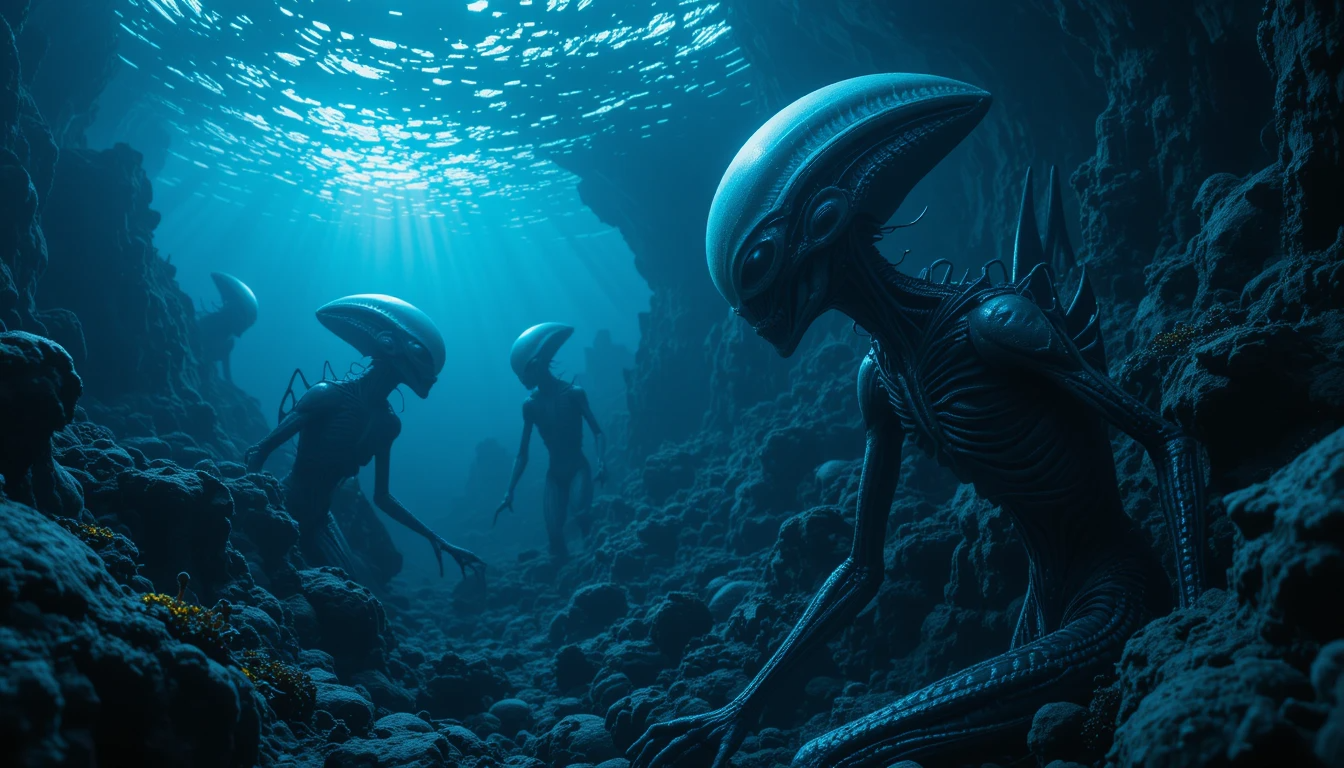Aliens in the Ocean: Exploring the Possibility of Life
Aliens in the ocean is a phrase that captivates the imagination and stirs debate among scientists, ufologists, and oceanographers alike. While traditional alien lore points to the skies, some believe the real mysteries may lie beneath our oceans.
With over 80% of Earth’s oceans unexplored and teeming with strange, bioluminescent, and ancient lifeforms, the hypothesis that alien life—or something very much like it—exists underwater is not as far-fetched as it once seemed.
The Ocean: Earth’s Final Frontier
The ocean covers over 70% of our planet and yet remains less explored than the surface of the Moon and Mars. According to the National Oceanic and Atmospheric Administration (NOAA), more than 80% of the ocean remains unmapped and unexplored. This vast, hidden expanse offers fertile ground for theories suggesting that lifeforms—possibly extraterrestrial—could exist undetected.
Extreme environments like deep-sea hydrothermal vents, subglacial lakes, and the Mariana Trench harbor organisms previously thought incapable of survival. These environments mirror conditions scientists believe may exist on moons like Europa (Jupiter) and Enceladus (Saturn), where subsurface oceans could support life.
Unidentified Submerged Objects (USOs)
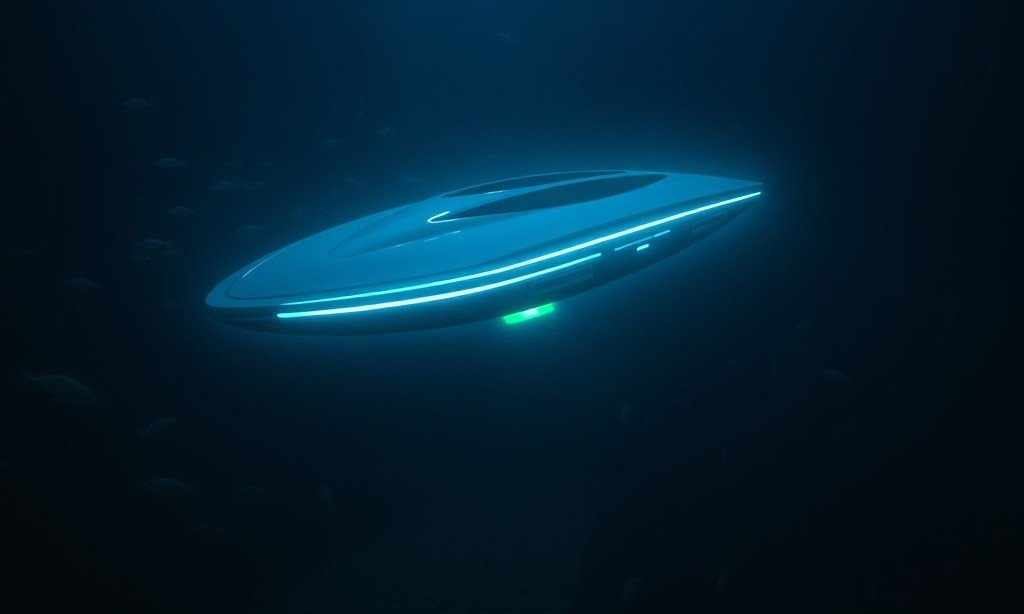
What Are USOs?
USOs are underwater counterparts to UFOs—objects seen traveling at high speeds or performing unconventional maneuvers beneath the ocean’s surface. While UFOs dominate airspace reports, USOs are increasingly drawing attention for their unexplained behaviors.
Documented Encounters
- USS Princeton Incident (2004) – During the famous “Tic Tac” UFO event, Navy radar also tracked anomalous underwater activity.
- Shag Harbour (1967) – Canadian authorities investigated a submerged object off Nova Scotia’s coast, with no conclusive explanation found.
- Puerto Rico Trench (2013) – A NOAA ocean floor probe captured inexplicable movements and sonar reflections in deep waters.
These accounts have prompted speculation that highly advanced craft—possibly extraterrestrial—might use oceans as covert travel or base locations.
Deep-Sea Life: Natural Aliens?
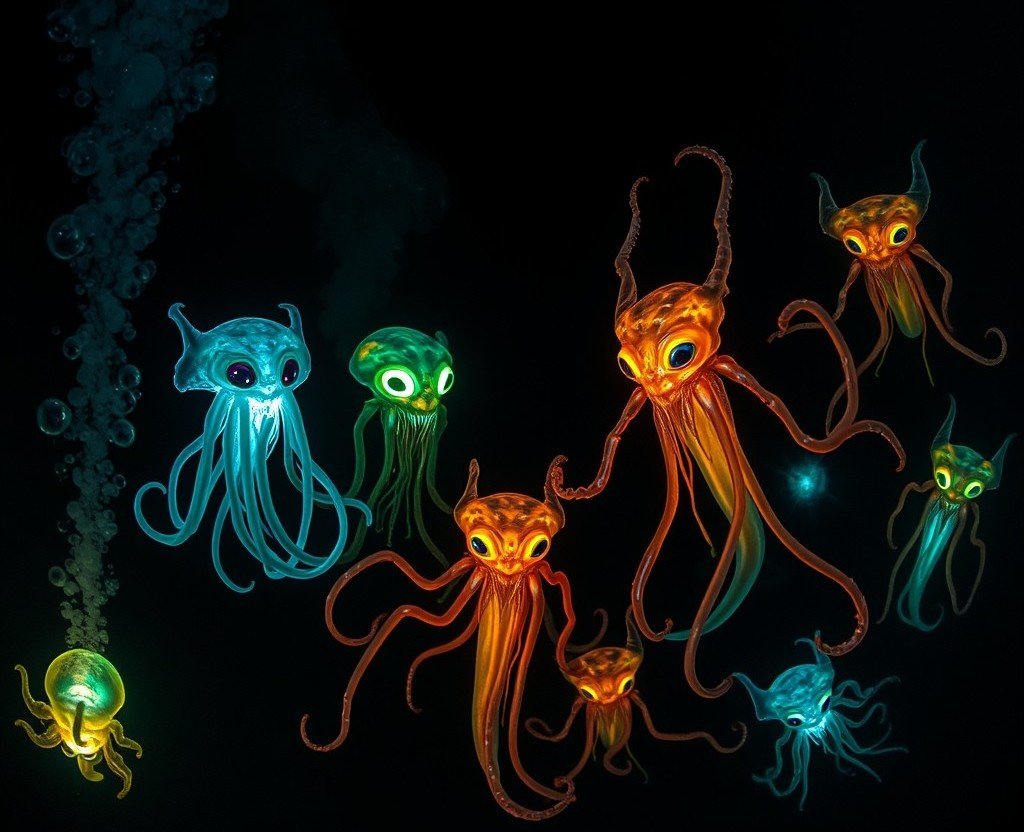
The creatures discovered in Earth’s deep oceans are often described as “alien” due to their bizarre shapes, luminescence, and survival mechanisms.
- Anglerfish – Lurking in pitch blackness, it uses a glowing lure to attract prey.
- Yeti Crab – Lives near hydrothermal vents and cultivates bacteria on its claws.
- Giant Squid – Once a myth, now confirmed to reach lengths over 40 feet.
These lifeforms thrive in crushing pressures and freezing darkness, mirroring the hypothetical conditions for extraterrestrial life on other planets.
Mythology and Ancient Accounts

Many ancient cultures have referenced gods, monsters, and mysterious beings emerging from the ocean:
- Babylonian Sea Gods (Oannes) – Described as half-fish, half-human beings with vast knowledge.
- Greek Sea Deities – Poseidon and others were often linked to unknowable powers from the depths.
- Norse Jörmungandr – A world serpent said to encircle the oceans of Earth.
While mythological, some researchers suggest these stories could be reinterpretations of ancient encounters with unknown entities—perhaps even non-terrestrial ones.
Underwater Anomalies and Structures
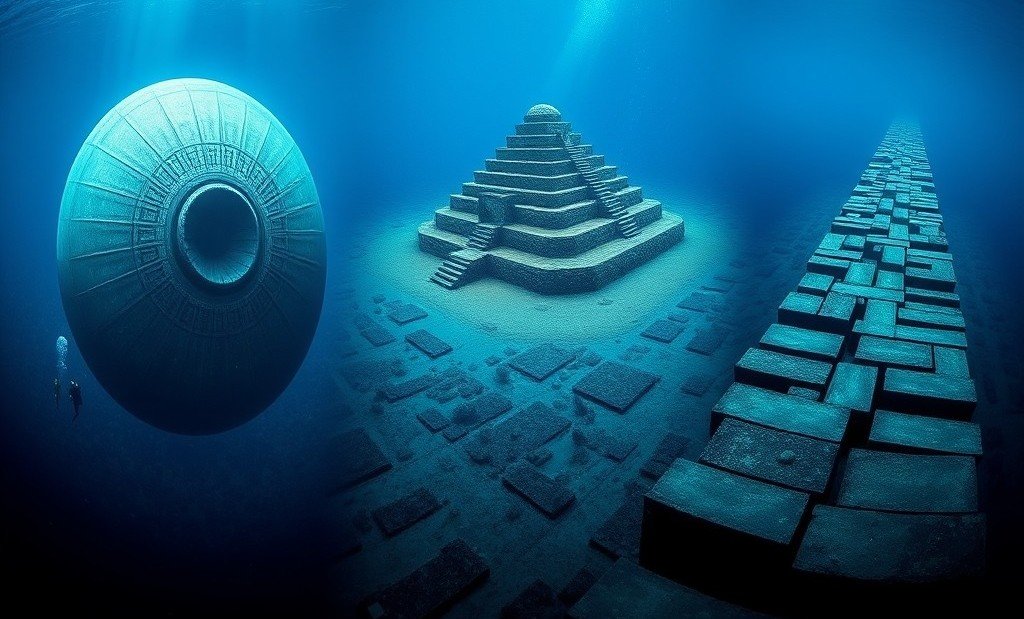
- The Baltic Sea Anomaly – Discovered in 2011, this formation resembles a crashed UFO and has sparked ongoing debate.
- Yonaguni Monument (Japan) – Submerged rock formations resembling pyramids or temples, possibly man-made.
- Bimini Road (Bahamas) – A submerged pathway that some believe is the remnant of Atlantis.
Though skeptics attribute these formations to natural geology, their geometric shapes and precise alignments fuel alternative theories.
Scientific Opinions: Skepticism vs. Open Inquiry
Most marine scientists and astrophysicists remain cautious. The prevailing view is that unusual underwater phenomena likely have natural explanations—thermal vents, seismic activity, or sonar glitches.
However, astrobiologists point out that Earth’s oceans are ideal analogs for alien oceans. NASA’s interest in Europa and Enceladus is largely driven by similarities to Earth’s extreme marine environments. The agency’s Ocean Worlds Exploration Program seeks to develop technologies for exploring icy, ocean-bearing moons using submersible probes.
The Role of Governments and Navy Disclosure
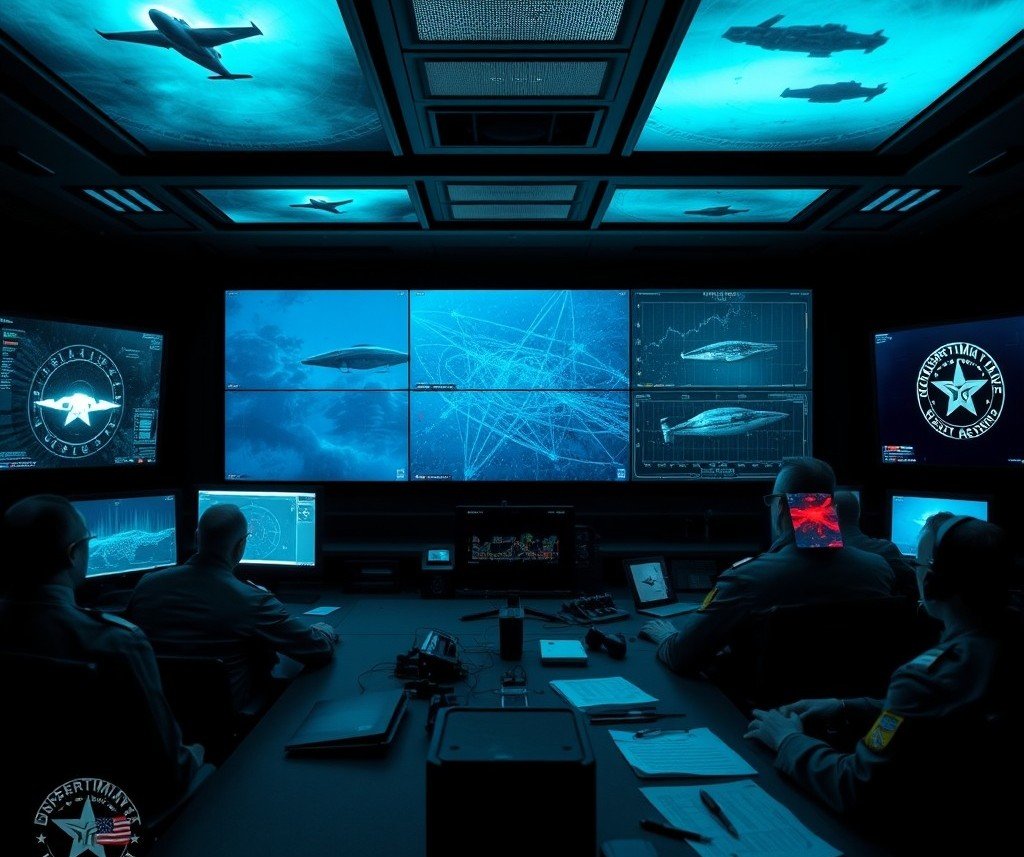
Declassified military documents and the recent establishment of the U.S. Department of Defense’s All-domain Anomaly Resolution Office (AARO) have given more legitimacy to the study of unidentified aerial and submerged phenomena.
The 2021 UAP (Unidentified Aerial Phenomena) report from the U.S. Office of the Director of National Intelligence (ODNI) includes cases involving ocean entry and exit by unknown craft. Though vague, these admissions have sparked renewed interest in USOs and underwater anomalies.
Could Aliens Actually Be Here?
Arguments For:
- Oceans offer secrecy and protection from human detection.
- Deep-sea thermal energy sources could power alien tech.
- Unexplored areas could hide bases or dormant probes.
Arguments Against:
- Lack of direct physical evidence.
- High cost and complexity of interstellar travel.
- Earth life is still the most plausible explanation for deep-sea mysteries.
Cultural Impact and Popular Media
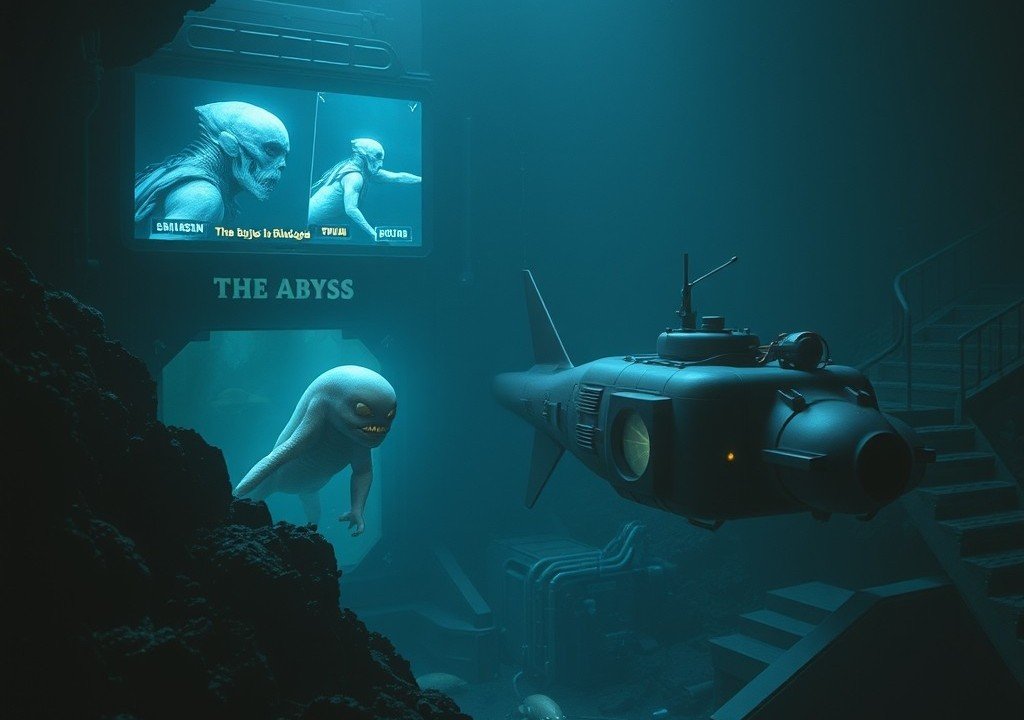
Films like The Abyss (1989) and documentaries on networks like Discovery and History Channel have helped popularize the idea of aquatic aliens.
While speculative, these portrayals often draw from real-life mysteries and serve as a gateway to scientific curiosity.
Conclusion
Aliens in the ocean may be a metaphor for how little we understand our planet’s largest habitat. While hard evidence of extraterrestrial life beneath the waves remains elusive, deep-sea anomalies, biological oddities, and government disclosures keep the conversation alive.
Whether these mysteries are rooted in Earth biology or something from the stars, our oceans deserve closer scrutiny—not just for science, but for the future of understanding life itself.
FAQ’s
1. Are there aliens in our sea?
No confirmed aliens exist in our sea, but some deep-sea creatures appear otherworldly due to extreme environments.
Their bizarre forms often spark speculation about extraterrestrial-like life on Earth.
2. What is the alien creature in the ocean?
Creatures like the giant squid and deep-sea anglerfish are often dubbed “alien” for their strange looks and adaptations.
These beings thrive in pitch-black depths with features unlike surface life.
3. What did NASA discover in the ocean?
NASA collaborates with oceanic studies to better understand alien-like environments and discovered unique thermal vent ecosystems.
These findings help simulate what life might look like on icy moons like Europa.
4. Have aliens ever been found?
No verifiable evidence of aliens has been discovered, either in space or in Earth’s oceans.
Claims exist, but none have passed scientific validation.
5. Why did NASA stop exploring the ocean?
NASA never officially led major ocean exploration; that’s NOAA’s domain.
The myth that NASA “stopped exploring the ocean” likely stems from misinterpreted collaborations.
6. Is there another world under the sea?
Yes, deep-sea ecosystems like hydrothermal vents form isolated worlds with unique life.
These areas are as mysterious and extreme as alien planets.
